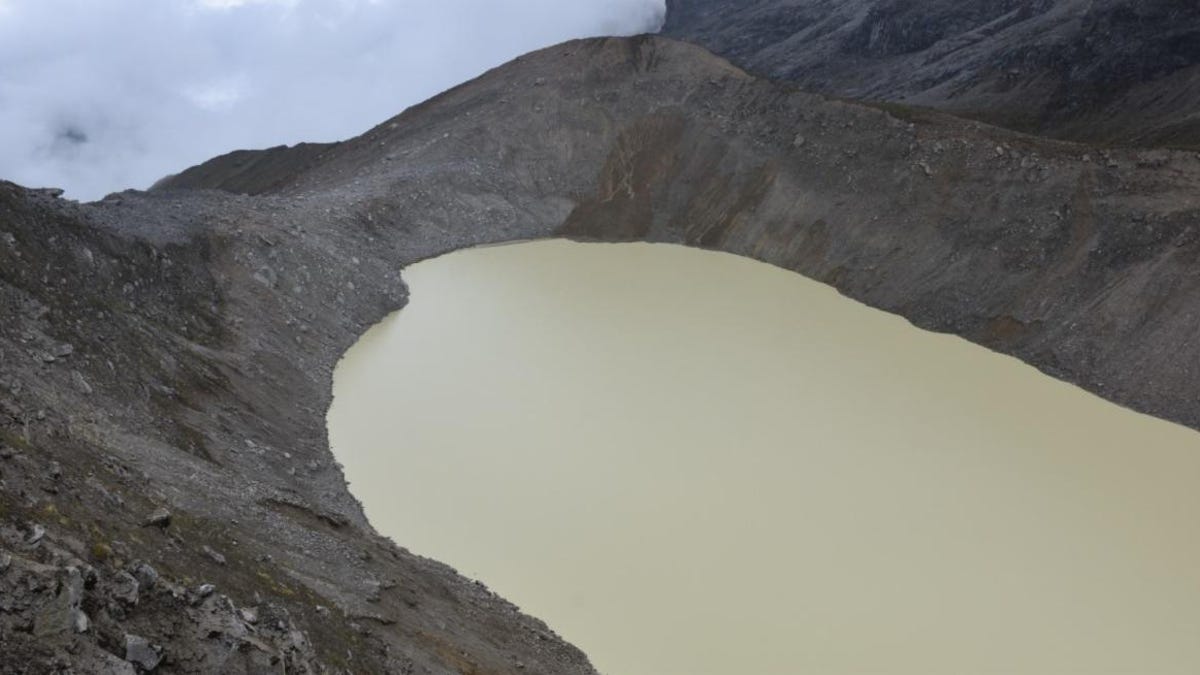Melting glacier triggers deadly flood at the foot of Machu Picchu
An avalanche from the heights of the Andes sent chaos far downstream in Peru.

An avalanche into this lake triggered a deadly flood near Machu Picchu.
A glacial avalanche on a massive peak overlooking the famed ruins of Machu Picchu in Peru triggered mudslides and flooding earlier this week, killing at least three people in the community of Santa Teresa, below the enigmatic Incan citadel.
At 20,574 feet (6,271 meters), Salkantay is covered by a giant ice cap that towers over the region. Like the other glaciated peaks of the tropical Andes, it's been melting and destabilizing at an accelerated rate in recent decades thanks to climate change. Perhaps the most dangerous consequence of this is the potential for ice and rock to fall into glacial lakes at the foot of the glaciers, sending waves of melt water downstream and into communities below.
Peruvian government authorities said Wednesday that's what happened when a "mixed avalanche" made up of 400,000 cubic meters of mostly rock and some ice tumbled off of Salkantay and into Salkantaycocha Lake. The slide on Sunday displaced enough water in the lake to create waves that over-topped the natural moraine dam holding the lake back.
The water then rushed down the Salkantay River valley, churning up mud, rocks and debris on its way toward Santa Teresa, which is a popular alternate approach to Machu Picchu for backpackers.
Peru's disaster authority, Centro de Operaciones de Emergencia Nacional, originally reported that heavy rains caused the increased flow in the river. However, after experts from Inaigem -- or the National Research Institute on Glaciers and Mountain Ecosystems -- visited Salkantaycocha, it became clear the destabilized glacier was to blame.
COEN reports that the raging waters caused the collapse of 300 houses and that around 20 people are missing in addition to the three confirmed deaths. Nineteen international tourists were evacuated from the affected area, including five Americans and others from Germany, the Netherlands, Mexico and Brazil. Another 30 people were rescued and flown out from the disaster area, including a woman who had just given birth in the downstream town of Sahuayaco, which was also affected.
Despite the deadly aftermath, Inaigem reports that the outcome could have been much worse had the wave in the lake broken through the natural dam that restrains it, potentially allowing much of its 2 million cubic meters of water to rush downhill toward civilization.
The route to Machu Picchu via Santa Teresa is closed for the time being, while the train that approaches the site from the opposite direction remains unaffected. Some of the staff from the Machu Picchu National Archaeological Site have been dispatched to help with search and rescue operations.
For more on the threat posed by glacial lake floods in the Andes, check out this feature from last year highlighting a lake on the other side of Peru that's thought to pose an even bigger risk than those near Machu Picchu.

